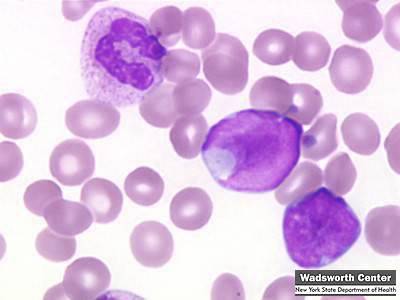 Acute
Lymphocytic Leukemia
Acute
Lymphocytic Leukemia Acute
Lymphocytic Leukemia
Acute
Lymphocytic LeukemiaAcute Lymphocytic Leukemia is the most common in children, but is acquired during a person’s life and not inherited. It has the same symptoms as AML, but the risk factors are not really known. Rates of ALL vary from place to place and are increased in more developed countries (Leukemia and Lymphoma Society, 2005). This may be connected with less exposure to infectious diseases early in life or with population mixing.
Incidence: Each year, about 3,970 - 4,000 Americans are diagnosed with ALL (Robien and Ulrich, 2003).
Prevalence in children: ALL is the form of leukemia that affects children the most, comprising 75% of leukemia cases in this age group (Robien and Ulrich, 2003).
Average age at onset: The average age of a patient at onset is 10 (Robien and Ulrich, 2003).
Specific risk factors: Researchers are not sure what factors lead to the development of ALL, because few environmental factors have been associated with a higher risk of getting ALL. The rates of ALL are variable by location and lifestyle, with “higher leukemia rates in more developed countries and in higher socioeconomic groups” (Leukemia and Lymphoma Society, 2005). The difficulty of pinpointing one cause of ALL indicates that it may be caused by a combination of different factors.
Created by Shannon McGlauflin, Jolene Munger, and Rebecca Nelson, 2005.